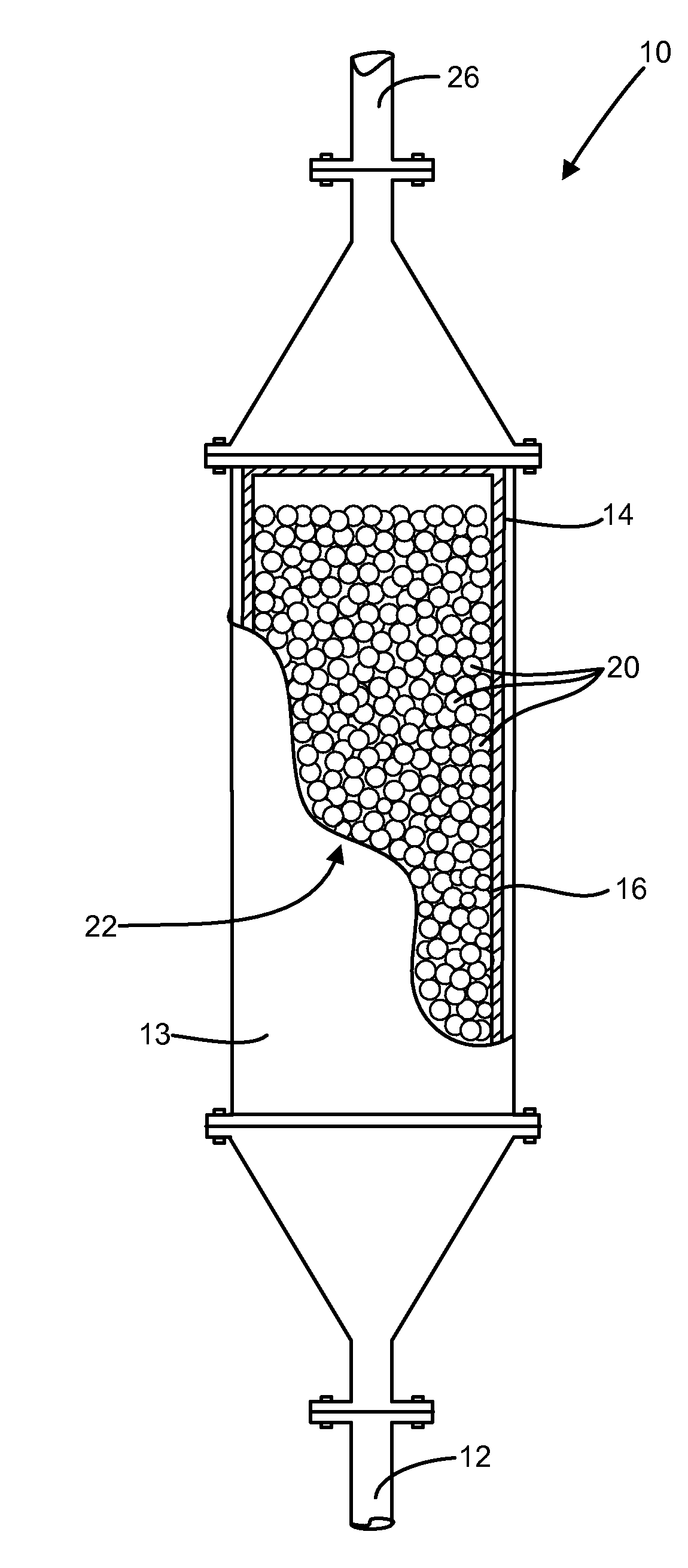Methods and devices for reducing hazardous air pollutants
a technology of hazardous air pollutants and applied in the direction of hydrogen sulfide, electrostatic separation, combustible gas purification/modification, etc., can solve the problems of large capital and maintenance costs, high energy consumption of air pollution control devices, and high energy consumption of many such air pollution control devices. achieve the effect of reducing pollution and reducing an initial amount of sulfur oxides
- Summary
- Abstract
- Description
- Claims
- Application Information
AI Technical Summary
Benefits of technology
Problems solved by technology
Method used
Image
Examples
example i
[0101]A solid pelletized material is formed by mixing 10% by weight of Type III (chemically and physically similar to Type I cement except ground finer to produce higher early strengths ranging from 320 to 670 m2 / g Blaine fineness, generally greater than about 450 m2 / g Blaine fineness) weight Portland cement with 90% stainless steel slag in a mixer. 30% water is added to the mixture (on a wet basis 63% slag and 7% Portland cement) until pelletized particles are formed having an average particle diameter of about 2 to 6 mm. The solid particles are placed in a packed bed reactor having a reactor bed divided into three stages. The reactor is 8 inches (about 20 cm) in diameter and has a length of about 3 feet (91 cm). The three-stage reactor bed is filled to a height of about 2.5 feet (about 76 cm). A coal-burning furnace is operated to generate an effluent having a flow rate of about 41,000 cubic feet per minute and containing sulfur oxides (SOX), nitrogen oxides (NOX), and carbon diox...
PUM
| Property | Measurement | Unit |
|---|---|---|
| temperature | aaaaa | aaaaa |
| particle size diameter | aaaaa | aaaaa |
| differential pressure | aaaaa | aaaaa |
Abstract
Description
Claims
Application Information
 Login to View More
Login to View More - R&D
- Intellectual Property
- Life Sciences
- Materials
- Tech Scout
- Unparalleled Data Quality
- Higher Quality Content
- 60% Fewer Hallucinations
Browse by: Latest US Patents, China's latest patents, Technical Efficacy Thesaurus, Application Domain, Technology Topic, Popular Technical Reports.
© 2025 PatSnap. All rights reserved.Legal|Privacy policy|Modern Slavery Act Transparency Statement|Sitemap|About US| Contact US: help@patsnap.com



